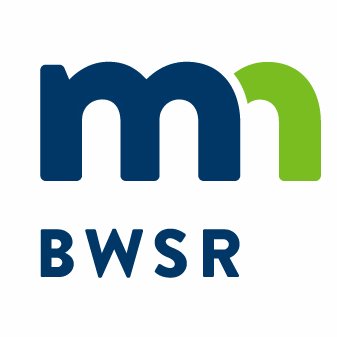94% of Minnesota public waters now have buffers
Public implementation deadline for public waters is November 1.
State Commissioners urge farmers to work with local SWCDs to find solution that works best for their land
St. Paul, Minn.
Minnesota farmers and landowners are making significant progress in implementing the state’s new buffer requirement that goes into effect November 1. Board of Water and Soil Resources (BWSR) Executive Director John Jaschke, along with Minnesota Agriculture Commissioner Dave Frederickson and Department of Natural Resources Assistant Commissioner Sarah Strommen highlighted the tremendous progress that has been made regarding buffer implementation and provided reminders and resources for landowners to meet the buffer requirements.
Minnesota landowners and Soil and Water Conservation Districts have been hard at work statewide to achieve buffer compliance. With just under one month to go until the November 1 implementation deadline, statewide buffer compliance on public waters is currently over 94%.
“Thanks to the efforts of Minnesota landowners, we are well on our way to meeting the November 1 deadline to have buffers on Minnesota public waters. Minnesota’s buffer law is designed to be flexible while delivering improved water quality benefits for future generations,” BWSR Executive Director John Jaschke said. “We have many great examples of landowners and SWCDs working together to find a solution that works for them and their land.”
Minnesota Department of Agriculture (MDA) Commissioner Dave Frederickson thanked farmers and landowners for the work that has been completed to date. “Having a compliance rate of 94% one month before the implementation deadline demonstrates that farmers are making significant progress in meeting the buffer requirements. “We want to encourage farmers and landowners to work with their SWCD if they are not able to meet the November 1st deadline to find a solution that works for them and their land,” said Commissioner Frederickson.
BWSR and the Department of Agriculture have created a number of resources for landowners to help with buffer implementation. Landowners have the option of complying with the law by using alternative practices that have equivalent water quality benefits to buffers. BWSR has put out guidance documents to support landowners identifying alternative practices for their lands. Additionally, landowners who request financial and technical assistance can request additional time to comply with their local Soil and Water Conservation District (SWCD).
If unable to meet the November 1 deadline, a landowner who commits to a compliance plan with their local SWCD by November 1, 2017, will receive a waiver until July 1, 2018 to implement their buffer or alternative practice.
Governor Mark Dayton signed bipartisan legislation in 2015 to establish Minnesota’s water quality buffer initiative. The effort is designed to reduce phosphorous, nitrogen, and sediment from entering Minnesota’s lakes and streams to improve water quality statewide. After receiving additional feedback from farmers and landowners across Minnesota, Governor Dayton signed another bipartisan bill into law in 2016 to provide more flexibility for landowners. With more than 40 percent of the state’s waters polluted or impaired, the need for this initiative is clear. November 1, 2017 is the deadline for public waters to have buffers in place.
For more information
More information on the buffer program, including more detailed information on alternative practices and the variety of technical and financial assistance available to help landowners with implementation, can be found at mn.gov/buffer-law.

